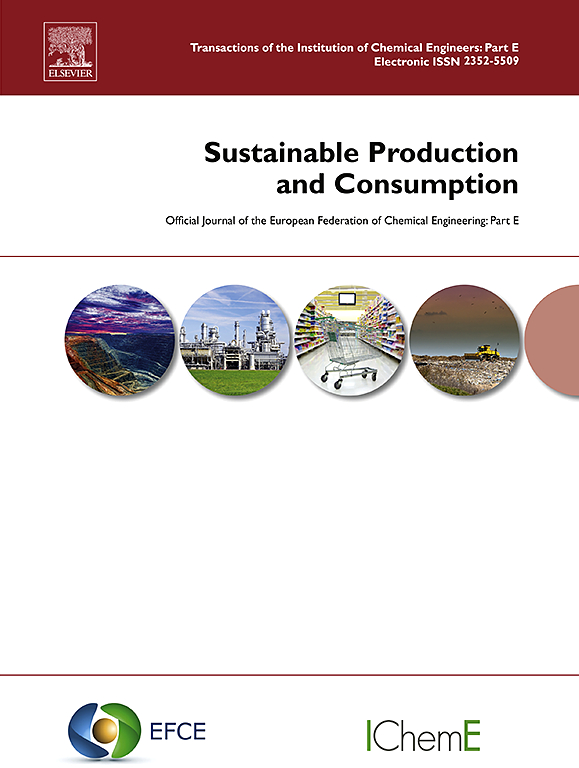水果的碳足迹:从生命周期角度进行系统回顾
IF 10.9
1区 环境科学与生态学
Q1 ENVIRONMENTAL STUDIES
引用次数: 0
摘要
农业食品系统面临的挑战是,既要满足日益增长的食品需求,又要最大限度地减少对碳的影响,这反映在对农业食品产品碳足迹评估研究的增加上。尽管水果在农业食品总产量中所占的比例很大,而且还在不断扩大,但人们不仅对其整个生命周期的碳足迹探索不足,而且在这一领域的现有知识也比较零散和分散。为解决这些问题,本研究采用 "系统文献综述和元分析首选报告项目 "框架,对 161 篇同行评议期刊论文进行了系统综述。审查的重点是每项研究的范围、评估方法、排放热点和温室气体减排策略,同时对 289 个碳足迹值进行了元分析,为水果的碳足迹建立了参考点。研究结果表明,现有研究主要关注从摇篮到农场的空间边界和单一年份的生产数据。符合国际标准化组织(ISO)14040 和 14044 标准的基于过程的生命周期评估是主要方法。在大多数研究中,生产阶段被认为是温室气体排放的热点,然而,对整个水果生命周期的碳足迹值进行的元分析表明,生产阶段是一个关键的热点,但不是唯一的热点。荟萃分析表明,从摇篮到农场的平均碳足迹为每公斤水果 0.503 ± 0.365 公斤二氧化碳当量(CO2eq)。将边界扩大到 "摇篮到零售 "和 "摇篮到坟墓 "后,每公斤水果的平均值分别为 0.743 ± 0.193 和 1.257 ± 0.886 公斤二氧化碳当量。该研究强调了在未来研究中纳入碳固存的重要性,以准确定位水果在农业食品产品中的碳足迹,同时强调有必要制定一个标准协议,以获得更可靠、更具可比性的估计值。研究结果和减排战略有助于确保可持续的水果生产,具有学术和实践意义。本文章由计算机程序翻译,如有差异,请以英文原文为准。
The carbon footprint of fruits: A systematic review from a life cycle perspective
The agrifood system's challenge of meeting an ever-increasing demand for food while at the same time minimizing its carbon impact is reflected in increased research on the carbon footprint assessment of agrifood products. Despite fruits representing a significant and expanding proportion of total agrifood production, not only is their whole-of-life carbon footprint inadequately explored, but also the existing knowledge in this area is fragmented and dispersed. To address these issues, this study systematically reviewed 161 peer-reviewed journal articles using the Preferred Reporting Items for Systematic Literature Reviews and Meta-Analyses framework. The review focused on the scope of each study, assessment methods, emission hotspots, and greenhouse gas mitigation strategies, alongside a meta-analysis of 289 carbon footprint values, establishing reference points for fruits' carbon footprint. Findings revealed that existing studies predominantly focused on cradle-to-farm gate spatial boundaries and single-year production data. Process-based life cycle assessment adhering to the International Organization for Standardization (ISO) 14040 and 14044 standards was the dominant methodology. The production stage was identified as the greenhouse gas emission hotspot in the majority of studies, however, a meta-analysis of carbon footprint values across the entire fruit life cycle showed that the production stage is a critical but not the sole hotspot. The meta-analysis suggests an average cradle-to-farm gate carbon footprint of 0.503 ± 0.365 kg carbon dioxide equivalent (CO2eq) per kg fruit. Expanding the boundary to cradle-to-retail and cradle-to-grave resulted in mean values of 0.743 ± 0.193 and 1.257 ± 0.886 kg CO2eq per kg fruit, respectively. Emphasizing the importance of incorporating carbon sequestration in future studies for accurately positioning fruits among agri-food products in terms of their carbon footprint, the study underscores the need for developing a standard protocol for more reliable and comparable estimates. Findings and strategies for reducing emissions contribute to ensuring sustainable fruit production, with both academic and practical implications.
求助全文
通过发布文献求助,成功后即可免费获取论文全文。
去求助
来源期刊

Sustainable Production and Consumption
Environmental Science-Environmental Engineering
CiteScore
17.40
自引率
7.40%
发文量
389
审稿时长
13 days
期刊介绍:
Sustainable production and consumption refers to the production and utilization of goods and services in a way that benefits society, is economically viable, and has minimal environmental impact throughout its entire lifespan. Our journal is dedicated to publishing top-notch interdisciplinary research and practical studies in this emerging field. We take a distinctive approach by examining the interplay between technology, consumption patterns, and policy to identify sustainable solutions for both production and consumption systems.
 求助内容:
求助内容: 应助结果提醒方式:
应助结果提醒方式:


